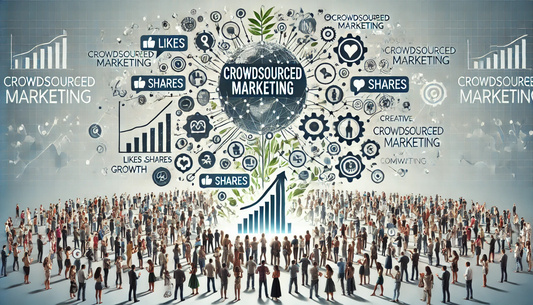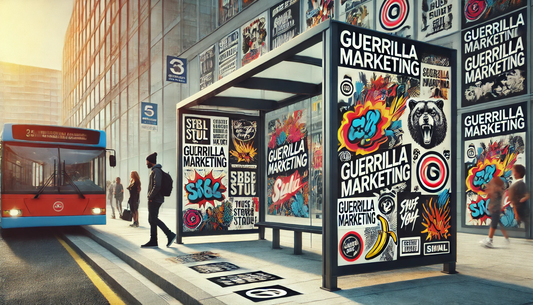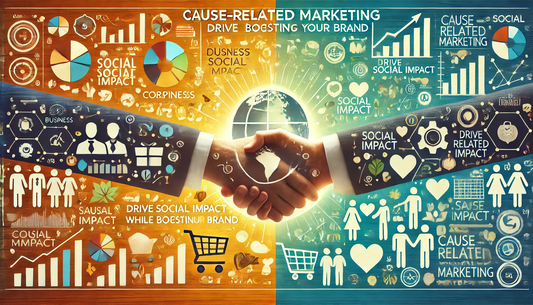Introduction to Proximity Marketing 📍📲:
Proximity marketing is a highly targeted strategy that uses location-based technologies to communicate directly with potential customers based on their physical proximity to a business 🛍️.
For startups with limited resources 💼, it's a game-changer. It allows you to target customers exactly when and where they are most likely to take action—whether they’re walking past your store 🚶♂️, attending an event 🎉, or even browsing in a mall 🛒.
For startups, proximity marketing offers an affordable way to gain attention without the hefty price tag of broader marketing campaigns 💸.
It’s a cost-effective tool that can put your brand in front of the right people at the right time, making it perfect for businesses looking to grow efficiently 📈.
Top 10 Real-Life Examples of Proximity Marketing Success 🚀🌟
- McDonald’s – Used beacon technology to send notifications offering meal discounts, significantly boosting foot traffic during lunch hours 🍔📲.
- Sephora – Leveraged geo-fencing around stores to send personalized offers to app users, increasing store visits and app engagement 💄📍.
- Target – Used in-store beacons to offer discounts and help customers navigate through aisles, enhancing the shopping experience 🛒📲.
- Coca-Cola – Set up beacons in vending machines to send discounts and promotions to nearby users, driving engagement and sales 🥤📱.
- Timberland – Deployed beacons to share personalized product recommendations, boosting in-store interaction and purchases 👞📲.
- Virgin Atlantic – Used beacons at airports to provide flight and gate information to passengers, improving the customer experience ✈️📍.
- Uber – Partnered with malls and events for geo-fenced promotions, increasing app downloads and ride bookings 🚗📍.
- H&M – Utilized proximity marketing in stores to offer style suggestions and exclusive discounts to nearby app users 👗📲.
- KFC – Implemented geo-fencing to promote new menu items to users who entered specific areas near their locations 🍗📱.
- Walgreens – Used beacon technology to alert customers about special offers, encouraging purchases at nearby stores 🏪📲.
How Proximity Marketing Works 📲🌐:
At its core, proximity marketing works by using technologies like Bluetooth, Wi-Fi, GPS, or NFC to send targeted messages to potential customers when they are physically close to a business or event 📶📍.
Here’s how a startup can leverage it:
- Beacons 📡: These small devices can be placed in strategic locations and transmit signals to smartphones, sending out special offers or notifications.
- Wi-Fi Marketing 📶: Offer free Wi-Fi in exchange for customers signing up with their email or social media accounts, giving you a chance to re-target them later.
- Geo-fencing 🗺️: This creates a virtual perimeter around a location, allowing you to send push notifications when customers enter or leave a certain area.
Startups can use these tools to create high-impact marketing moments, drawing attention without needing to blanket an entire city or region with ads 🌆.
By targeting people who are already nearby or on the move, you increase the chances of a conversion dramatically 💥.
Benefits for Startups 🎯💸:
- Lower Costs: Proximity marketing is incredibly cost-effective compared to traditional campaigns. You focus on people already near you, minimizing waste 💰.
- Increased Foot Traffic: A well-timed offer can motivate passersby to enter your store or visit your booth at an event 👣🏪.
- Credibility by Association: By connecting with established brands or events, startups can build credibility through association 🏅.
- Improved Customer Engagement: Proximity marketing enables real-time engagement with potential customers, leading to more meaningful interactions 💬.
Challenges and How to Overcome Them 🚧🔧:
While proximity marketing offers numerous benefits, it also comes with challenges. Two key issues startups face are brand alignment and competition for attention 👀.
- Brand Alignment: Make sure that the proximity marketing campaigns align with your brand values and target audience 🎨. Consistency is key to maintaining brand trust 🤝.
- Competition for Attention: In busy environments, like shopping malls or large events, multiple brands might compete for attention. To stand out, ensure your offer is compelling, exclusive, and time-sensitive ⏱️.
It’s important to test and refine your messaging to ensure that it resonates with your audience and positions your startup effectively 🎯.
Step-by-Step Guide to Implementing Proximity Marketing 📋📲:
- Choose the Right Technology 🛠️: Decide whether beacons, Wi-Fi, or geo-fencing is the best fit for your business. You may even choose to combine them for greater impact.
- Set Up Your Perimeter 📍: For geo-fencing, determine the area you want to target. For beacons, select high-traffic locations 🚶.
- Create Your Offer 💥: Develop a compelling offer that’s relevant to your audience and time-sensitive to create urgency.
- Send the Message 📢: Use push notifications or other forms of messaging to alert customers. Make sure the call-to-action is clear and easy to follow.
- Track and Optimize 📊: Use analytics to monitor the success of your campaign and make adjustments where necessary. Pay attention to the open rates and conversion rates to see what works best.
Tips for Maximizing Results 💡🚀:
- Personalize Your Offers 🎁: The more tailored the offer, the more likely customers are to engage. Consider offering personalized deals based on past behavior or preferences.
- Time It Right ⏰: Proximity marketing works best when offers are relevant to the time of day or the customer’s immediate needs.
- Make It Exclusive 🔐: Offering something that feels exclusive or limited to customers within the proximity encourages immediate action.
- Leverage Social Proof 🗣️: Showcase how other customers are benefiting from the offer or experience to create a sense of urgency and credibility.
Conclusion 🏁✨:
Proximity marketing is a powerful tool that allows startups to reach potential customers exactly when and where it matters most 📍💬.
By focusing on a highly targeted audience, startups can create personalized, real-time engagement that drives foot traffic, builds credibility, and increases conversions 📈.
Now is the time for founders to start leveraging this cutting-edge strategy and gain a competitive edge in the marketplace 🏆.










